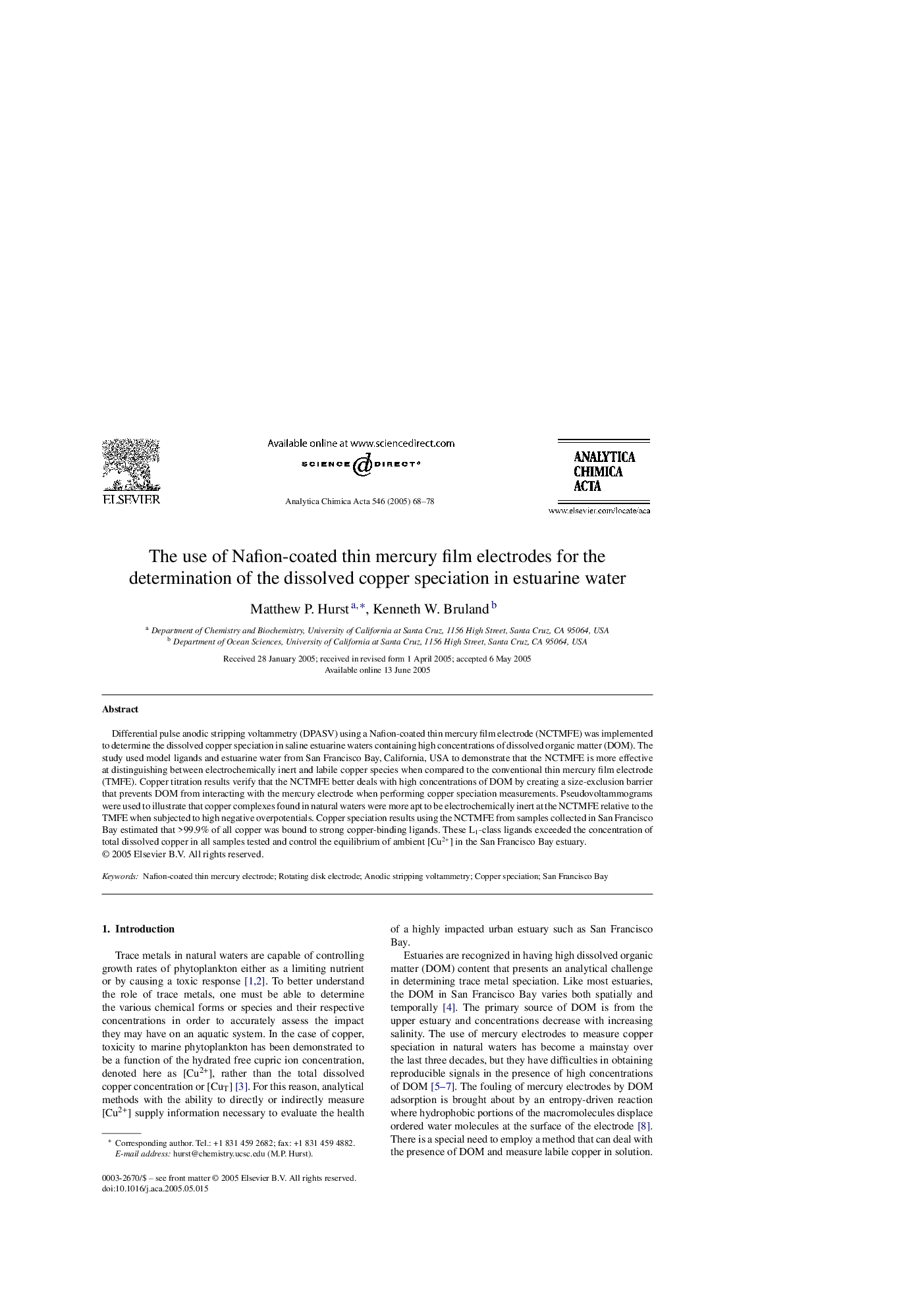| Article ID | Journal | Published Year | Pages | File Type |
|---|---|---|---|---|
| 10528951 | Analytica Chimica Acta | 2005 | 11 Pages |
Abstract
Differential pulse anodic stripping voltammetry (DPASV) using a Nafion-coated thin mercury film electrode (NCTMFE) was implemented to determine the dissolved copper speciation in saline estuarine waters containing high concentrations of dissolved organic matter (DOM). The study used model ligands and estuarine water from San Francisco Bay, California, USA to demonstrate that the NCTMFE is more effective at distinguishing between electrochemically inert and labile copper species when compared to the conventional thin mercury film electrode (TMFE). Copper titration results verify that the NCTMFE better deals with high concentrations of DOM by creating a size-exclusion barrier that prevents DOM from interacting with the mercury electrode when performing copper speciation measurements. Pseudovoltammograms were used to illustrate that copper complexes found in natural waters were more apt to be electrochemically inert at the NCTMFE relative to the TMFE when subjected to high negative overpotentials. Copper speciation results using the NCTMFE from samples collected in San Francisco Bay estimated that >99.9% of all copper was bound to strong copper-binding ligands. These L1-class ligands exceeded the concentration of total dissolved copper in all samples tested and control the equilibrium of ambient [Cu2+] in the San Francisco Bay estuary.
Related Topics
Physical Sciences and Engineering
Chemistry
Analytical Chemistry
Authors
Matthew P. Hurst, Kenneth W. Bruland,
